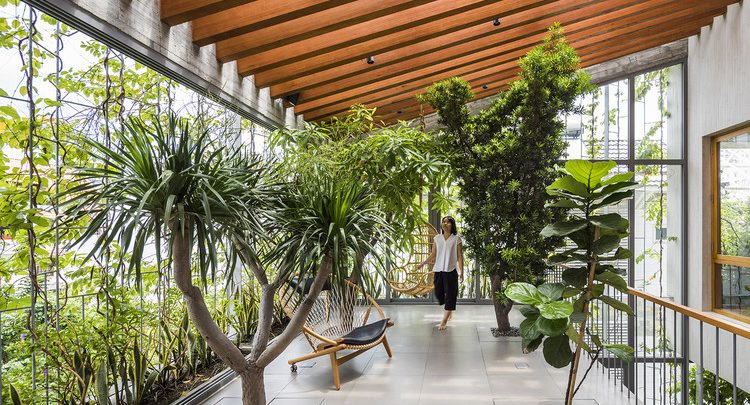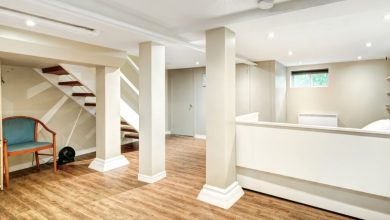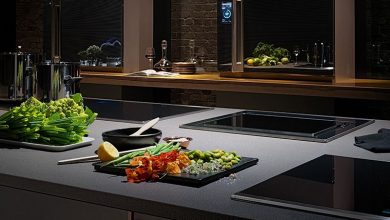Home
The Rise of Biophilic Design

In recent years, there has been a growing trend in interior design that focuses on our connection with nature. Biophilic design, as it is known, embraces the idea that humans have an innate need to be connected to the natural world. By incorporating natural elements and materials into our living spaces, we can create a sense of serenity, well-being, and harmony.
Bringing the Outdoors In
One of the key principles of biophilic design is to bring the outdoors in. This can be achieved through the use of natural light, plants, and organic materials. Large windows and skylights can flood a room with natural light, making it feel more open and inviting. Adding potted plants or hanging gardens can not only improve air quality but also create a sense of calm and tranquility.
Choosing Natural Materials
When designing a space with biophilic principles in mind, it’s important to select natural materials. Hardwood floors, stone countertops, and brick or wood walls can help create a connection to the natural world. Furniture made from materials such as bamboo, rattan, or reclaimed wood can also add a touch of rustic elegance.
Embracing Organic Shapes and Patterns
Incorporating organic shapes and patterns into your interior design can help create a sense of harmony and balance. Curved furniture, flowing lines, and nature-inspired prints can all contribute to a more biophilic aesthetic. Think of the gentle curve of a leaf or the delicate patterns found in a seashell.
Color Palettes Inspired by Nature
The colors we choose for our living spaces can have a profound impact on our mood and well-being. When embracing the biophilic design, it’s important to select a color palette inspired by nature. Soft greens, earthy browns, and calming blues can create a sense of tranquility and relaxation, while pops of vibrant colors such as sunny yellows or floral pinks can add a touch of energy and vitality.
Creating a Sense of Flow
Biophilic design is all about creating a sense of flow and connection between indoor and outdoor spaces. This can be achieved through careful placement of windows and doors that take advantage of natural views and landscapes. Incorporating natural materials in outdoor areas, such as stone pathways or wooden decks, can also help create a seamless transition from the inside out.
Enhancing Well-being and Productivity
Studies have shown that biophilic design can have a positive impact on our well-being and productivity. By incorporating natural elements into our living and working spaces, we can reduce stress levels, improve cognitive function, and boost creativity. Creating a calm and serene environment can also help promote better sleep and relaxation.
Conclusion
Biophilic design is more than just a passing trend; it’s a way to reconnect with nature in our increasingly urbanized world. By incorporating natural elements, organic shapes, and calming colors into our living spaces, we can create a sense of tranquility and well-being. So why not bring the outdoors in and embrace the beauty of biophilic design?






